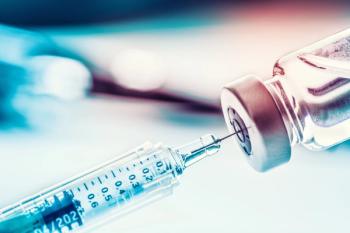
FDA approves dapagliflozin to improve glycemic control in pediatric T2D patients
The decision is based on statistical significance achieved in the T2NOW trial, which demonstrated reduction of A1C.
The FDA has approved dapagliflozin (Farxiga; AstraZeneca) for pediatric patients aged 10 years and older with typ
The first-in-class, once-daily, oral, sodium-glucose contrasport 2 (SGLT2) inhibitor was approved based on data from the pediatric T2NOW phase 3 trial (NCT03199053), which demonstrated a significant reduction in A1c in patients treated with dapagliflozin compared to placebo.1
The trial was 26-weeks with a 26-week extension among patients aged 10 to 17 years of age with uncontrolled T2D (A1c 6.5% to 10.5%) receiving metformin, insulin, or both. Study participants were assigned randomly 1:1:1 to 5 mg of dapagliflozin (n = 81), 2.5 mg of saxagliptin (n = 88), or placebo (n = 76). The trial was designed to evaluate dapagliflozin as add-on treatment. The primary endpoint of the trial was change in A1c after 26 weeks for dapagliflozin or saxagliptin vs placebo.1,2
Those in the active treatment groups with A1c at 7% or greater at week 12 were "further randomly assigned 1:1 at week 14 to continue the dose or up-titrate to a higher dose (10 mg of dapagliflozin or 5 mg of saxagliptin)," according to study results published in The New England Journal of Medicine.2
At week 26, the adjusted mean change in A1c was –1.03% (95% CI, –1.57 to –0.49 [P < 0.001]) for dapagliflozin and −0.44% (95% CI, −0.93 to 0.05; [P = 0.078]) for saxagliptin compared to placebo. Adverse events and serious adverse events occurred in 72.8% and 8.6%, respectively, of patients who received dapagliflozin, 69.3% and 8.0% of patients who receivied saxagliptin, and 71.1% and 6.6% of patients who received placebo.2
Severe hypoglycemia occurred in 4.9% of patients who received dapagliflozin, in 4.5% of patients who received saxagliptin, and in 7.9% who received placebo. Headache was the most common adverse event (dapagliflozin 14.8%; placebo 5.3%), with most events considered mild, and none considered serious. No adverse events resulted in trial discontinuation.2
Overall, the trial demonstrated that statistical significance was achieved in the primary and all secondary endpoints, which included change in fasting plasma glucose and proportion of patients (A1C ≥7% at baseline) achieving A1C <7.0% (53 mmol/mol) after 26 weeks.1
According to AstraZeneca, T2D prevalence in children and adolescents is increasing globally, with nearly 30,000 patients under 20 years of age living with T2D in the United States. Additionally, according to the Centers for Disease Control and Prevention (CDC), 5300 new cases are diagnosed each year, stated the pharmaceutical company. Compared to adults, younger T2D patients can experience earlier complication onset and faster advancement of disease.1
"The prevalence of type-2 diabetes continues to rise in children and adolescents, yet oral treatment options have remained limited for this population," said Ruud Dobber, executive vice president, BioPharmaceuticals Business Unit, AstraZeneca, in a statement. "Today’s approval represents an important milestone for pediatric patients living with type-2 diabetes in the US, extending this medicine’s potential benefits to even more patients facing high unmet needs and reinforcing AstraZeneca’s commitment to delivering innovative treatments across cardiovascular, renal and metabolic diseases.”1
Prior to the federal agency's decision, dapagliflozin was approved for adults in the United States with T2D as an adjunct to diet and exercise to improve glycemic control.1
References:
- Farxiga approved in the US for the treatment of paediatric type-2 diabetes. AstraZeneca. Press release. June 12, 2024. Accessed June 12, 2024. https://www.astrazeneca.com/media-centre/press-releases/2024/farxiga-approved-in-the-us-for-the-treatment-of-paediatric-type-2-diabetes.html
- Shehadeh N, Barrett T, Galassetti P, et al. Dapagliflozin or saxagliptin in pediatric type 2 diabetes. NEJM Evidence. 2023;2(12). doi:10.1056/EVIDoa2300210
Newsletter
Access practical, evidence-based guidance to support better care for our youngest patients. Join our email list for the latest clinical updates.











